As critics of renewable energy like to point out, the main downside of solar and wind energy — apart from the large amount of space such systems require — is intermittency.
Power plants which burn coal or natural gas can go full throttle in periods of high demand, then ease back when less electricity is needed. But every day the sun sets, and humanity has no control over the wind.
The output of Taiwan’s photovoltaic arrays is likely to peak when demand is highest, because so many people use air conditioning when it’s hot and sunny. With wind, it’s a very different story. Data published by state-run utility Taiwan Power Co (Taipower) shows that, between May last year and April this year, the most productive month for the country’s wind farms was January. December and October weren’t far behind, but in April, wind contributed just 43.15 GWh to the grid, barely a third of the January total.
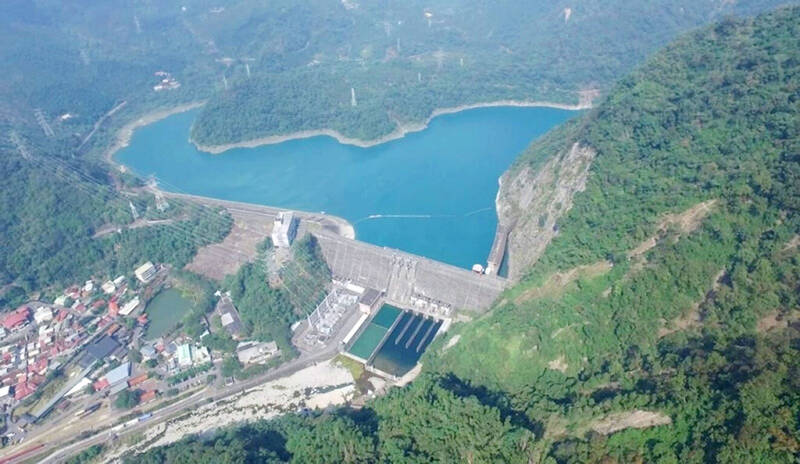
Photo courtesy of Taipower
To avoid wasting surplus electricity generated on cold days, when wind turbines spin but demand is low, and to ensure there’s sufficient power even after dark, Taiwan is rapidly expanding its energy storage capacity.
PUMPED STORAGE HYDROPOWER
For many years, the only way in which Taipower could store meaningful amounts of power (as opposed to fuel) was via a pumped storage hydropower (PSH) system in Nantou County.
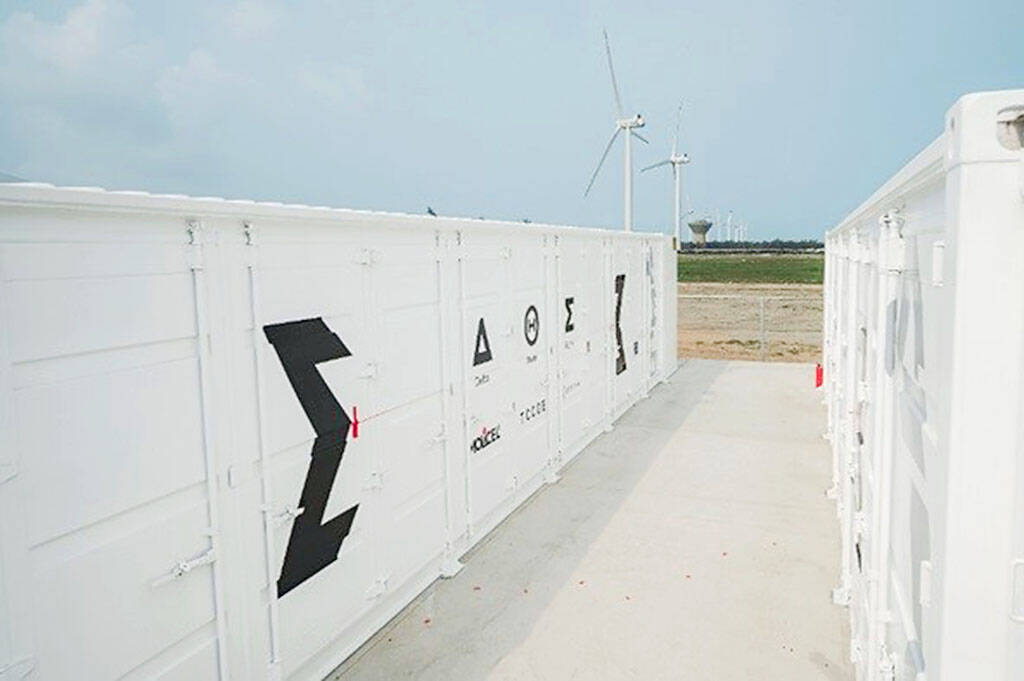
Photo courtesy of NHOA TCC
It’s a typical PSH setup. Surplus electricity is used to move water from Mingtan Reservoir (明潭水庫, where the top of the dam is 375m above sea level) to Minghu Reservoir (明湖水庫, dam-top altitude: 450m), or from Minghu to Sun Moon Lake (elevation 748m).
These bodies of water function like giant batteries. When the grid needs a boost, stored water is released. As it flows downhill, it turns electricity-generating turbines.
As part of Taipower’s efforts to enhance grid resilience and stability, the utility is pushing ahead with plans to add PSH capacity at Shimen Reservoir (石門水庫) in Taoyuan and Deji Reservoir (德基水庫) in Taichung.
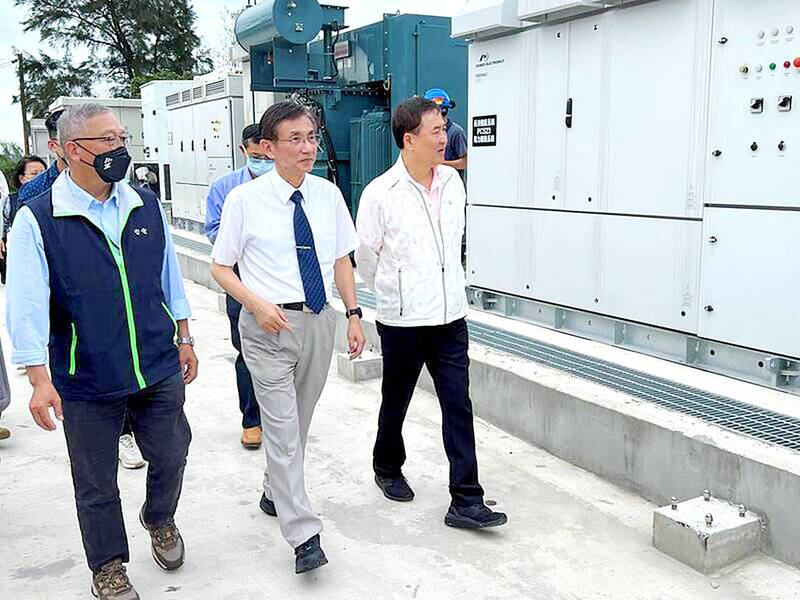
Photo courtesy of the Control Yuan
The former, said to be a relatively straightforward project, may be finished before the end of next year. The latter is more challenging, as it involves boring a 10.7km-long tunnel to connect Deji Reservoir with Guguan Reservoir (谷關水庫). Completion is scheduled for 2034. Feicui Reservoir (翡翠水庫) in New Taipei has also been identified as a potential PSH site.
PSH systems are reasonably efficient, but somewhat slow when it comes to meeting sudden surges in demand or unforeseen interruptions in supply. Batteries offer much better response times, milliseconds rather than minutes.
This is one reason why utilities hoping to insure themselves against grid disruptions are pouring money into large-scale battery storage. It’s also why, in some parts of the world, entrepreneurs are investing in such systems. When electricity is cheap, they buy; when the spot price for power soars, they can cash in.
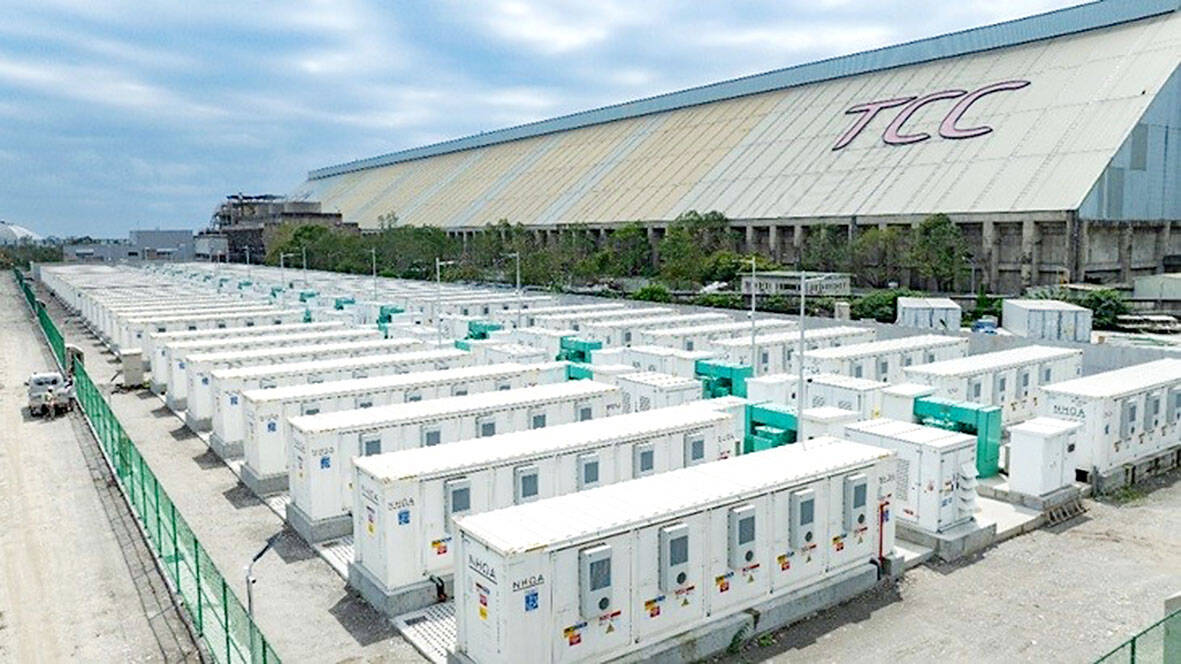
Photo courtesy of NHOA TCC
Some power-hungry enterprises use on-site battery storage systems so they can engage in “peak shaving” and reduce their purchases of electricity during those hours when its price is high.
On May 13, Canary Media observed “this year, for the first time ever, the fastest-growing energy storage market appears to be Texas, a free-market-affirming red state that officially cares little about solving climate change. Nonetheless, the state’s low-regulation, business-friendly landscape has created ideal conditions to build batteries quickly and at scale.”
In Taiwan, the development of energy storage was initially rather slow, one reason being an expectation that the politicians who supervise Taipower will force the utility to keep prices relatively low.
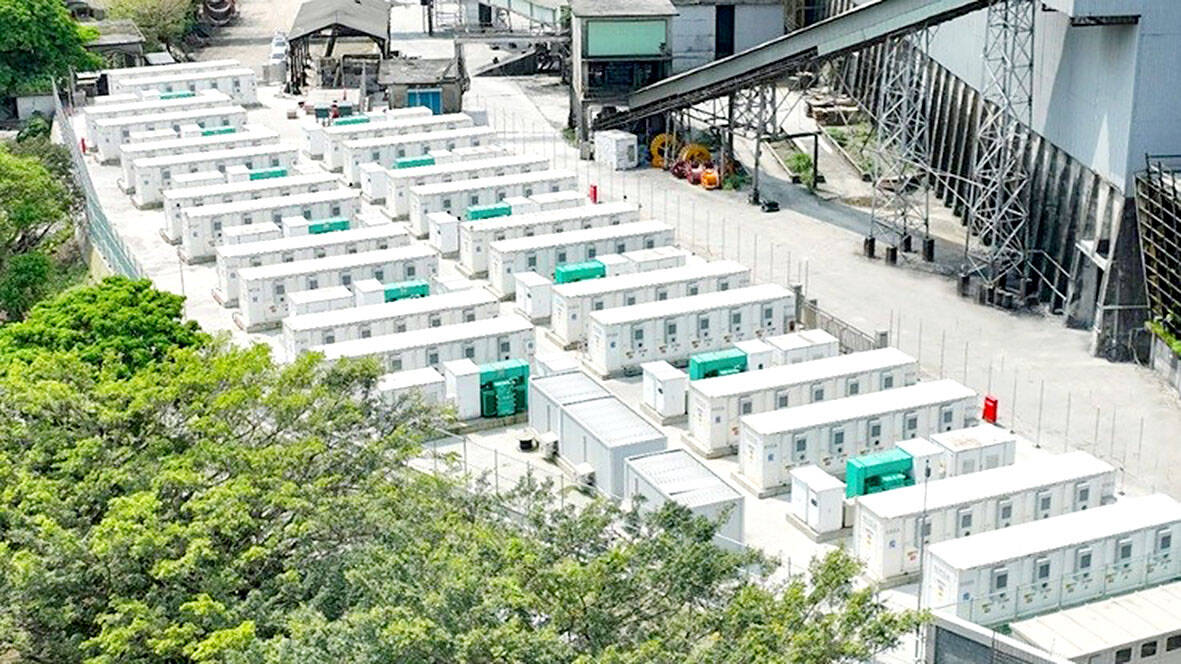
Photo courtesy of NHOA TCC
While qualifying their forecast as “an optimistic scenario,” a Nov. 17, 2021 article published by Taipei-based InfoLink Consulting predicted that “cumulative energy storage installations will jump from 3 GWh [in 2023] to 20 GWh in 2030.” (On a summer’s afternoon, 20 GWh is enough to keep Taiwan going for about half an hour.)
Such optimism might well be justified. In an April 6 report last year, Canary Media praised Taiwan, saying: “Other countries spent years hashing out policy reforms to promote storage adoption. Jumping in after a decade of battery cost declines, Taiwan has managed to bypass the foot-dragging and get batteries built by both the incumbent utility and a mix of competitive developers.”
This shift, the report went on to say, will “help ensure the grid doesn’t get wobbly as even more wind and solar connect to it.” Given the frequency of blackouts in Taiwan, this is a compelling argument in favor of much more battery storage.
Among Taipower’s investments in battery storage is a 20 MWh facility at the Salt Field Solar Farm in Tainan’s Jiangjyun (將軍) and Cigu (七股) districts. Compared to the sprawling solar farm, the storage system is compact, just eight 20-foot freight containers filled with rechargeable lithium-ion battery modules.
SAFETY ISSUES
Since the Tainan battery park was connected to the grid at the start of last year, a 20 MWh storage facility at Luyuan Substation (路園變電所) in Kaohsiung’s Alian District (阿蓮) has been completed. And earlier this year, 60 MWh of battery storage came online at Longtan Substation (龍潭變電所) on the border of Taoyuan and Hsinchu County.
Following multiple battery-cluster fires, including 28 in South Korea between 2017 and 2019, those designing and building such systems now have a better idea of the safety risks. Once they’ve started burning, lithium-ion battery conflagrations are notoriously difficult to extinguish. What’s more, they produce toxins including carbon monoxide, hydrogen chloride, hydrogen cyanide, hydrogen fluoride and methane.
The Longtan project was a collaboration between Taipower and Fluence Energy, Inc, part of Siemens AG. An emailed response from Fluence Energy, Inc touts its experience delivering “complete energy storage systems with world-class safety standards and capabilities integrated into every aspect of product design.” Safety features include emergency shutdown circuits, as well as gas detection, fire detection, and suppression systems.
In 2021, Taiwan Cement Corporation (TCC) took a majority stake in an Italy-based battery-storage company which they renamed NHOA. Last December, NHOA commissioned a 311 MWh storage system at TCC’s Heping Plant in Sioulin Township (秀林), Hualien County. By the end of this year, the total installed capacity of NHOA TCC storage sites around Taiwan is expected to reach 655 MWh.
Some static storage projects overseas utilize repurposed electric-vehicle (EV) batteries. Because they’ve lost 20 percent or more of their capacity, these battery packs are no longer wanted by range-conscious EV owners — but in other roles they can be used for several more years.
Every battery deployed by NHOA TCC is new, and the majority were sourced from Samsung SDI, according to emailed answers provided by TCC’s head office. The batteries, which are expected to last 10 to 15 years, are installed inside specially-designed cabinets made of ultra-high performance concrete. Each cabinet’s temperature-monitoring and fire-suppression system will, if necessary, inject 9,000-plus liters of water, “while maintaining the integrity of the cabinet, ensuring the battery modules are submerged to effectively stop thermal runaway and extinguish the fire,” TCC says.
When asked how it plans to dispose of end-of-life batteries, both TCC and Fluence Energy, Inc express good intentions without providing many details. Saying that Molicel (a battery brand owned by TCC) is “actively engaged” in recycling projects, the cement conglomerate explains its teams “will also closely exchange information on recycling technologies moving forward.”
PSH and batteries aren’t the only energy storage options.
COMPRESSED-AIR ENERGY STORAGE
Compressed-air energy storage (CAES) uses electricity to compress air and seal it under high pressure. When power is needed, the air can be released through a turbine. Few CAES systems are more than 65 percent efficient, however, compared to 70 to 80 percent for PSH and a claimed 85 to 95 percent for lithium-ion batteries.
Surplus electricity can also be used to split water into hydrogen and oxygen by electrolysis. The hydrogen can then be compressed and stored for future use in a fuel cell or an internal combustion engine.
As the number of EVs grows, vehicle-to-grid (V2G) technologies are expected to increase storage flexibility and capacity. Via a smart meter, a Tesla that’s plugged in to the mains and mostly charged up could sell power back to the grid if it’s needed, then resume recharging later. This kind of innovation may or may not meet resistance, depending on whether motorists see it as undermining their precious “go anywhere/go anytime” autonomy, or as a way to cut the cost of owning an EV.
Steven Crook, the author or co-author of four books about Taiwan, has been following environmental issues since he arrived in the country in 1991. He drives a hybrid and carries his own chopsticks. The views expressed here are his own.

The Democratic Progressive Party (DPP), Chinese Nationalist Party (KMT), and the country’s other political groups dare not offend religious groups, says Chen Lih-ming (陳立民), founder of the Taiwan Anti-Religion Alliance (台灣反宗教者聯盟). “It’s the same in other democracies, of course, but because political struggles in Taiwan are extraordinarily fierce, you’ll see candidates visiting several temples each day ahead of elections. That adds impetus to religion here,” says the retired college lecturer. In Japan’s most recent election, the Liberal Democratic Party lost many votes because of its ties to the Unification Church (“the Moonies”). Chen contrasts the progress made by anti-religion movements in
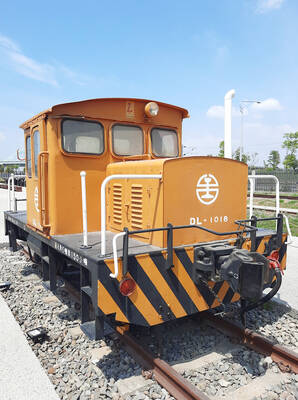
Taiwan doesn’t have a lot of railways, but its network has plenty of history. The government-owned entity that last year became the Taiwan Railway Corp (TRC) has been operating trains since 1891. During the 1895-1945 period of Japanese rule, the colonial government made huge investments in rail infrastructure. The northern port city of Keelung was connected to Kaohsiung in the south. New lines appeared in Pingtung, Yilan and the Hualien-Taitung region. Railway enthusiasts exploring Taiwan will find plenty to amuse themselves. Taipei will soon gain its second rail-themed museum. Elsewhere there’s a number of endearing branch lines and rolling-stock collections, some

Last week the State Department made several small changes to its Web information on Taiwan. First, it removed a statement saying that the US “does not support Taiwan independence.” The current statement now reads: “We oppose any unilateral changes to the status quo from either side. We expect cross-strait differences to be resolved by peaceful means, free from coercion, in a manner acceptable to the people on both sides of the Strait.” In 2022 the administration of Joe Biden also removed that verbiage, but after a month of pressure from the People’s Republic of China (PRC), reinstated it. The American
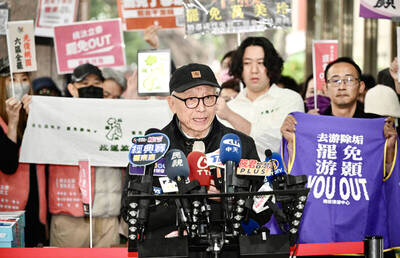
This was not supposed to be an election year. The local media is billing it as the “2025 great recall era” (2025大罷免時代) or the “2025 great recall wave” (2025大罷免潮), with many now just shortening it to “great recall.” As of this writing the number of campaigns that have submitted the requisite one percent of eligible voters signatures in legislative districts is 51 — 35 targeting Chinese Nationalist Party (KMT) caucus lawmakers and 16 targeting Democratic Progressive Party (DPP) lawmakers. The pan-green side has more as they started earlier. Many recall campaigns are billing themselves as “Winter Bluebirds” after the “Bluebird Action”